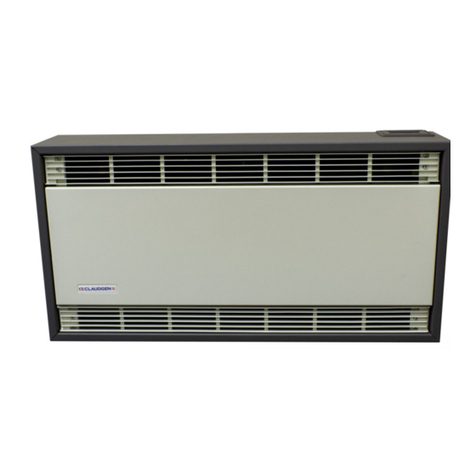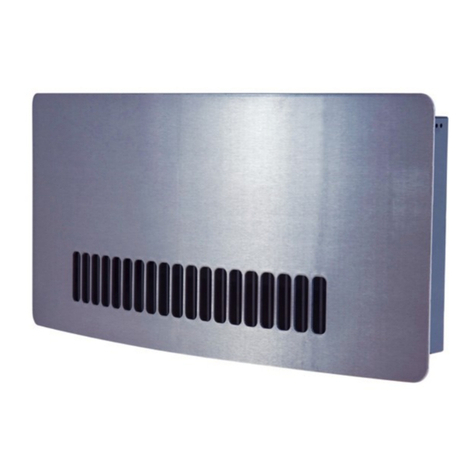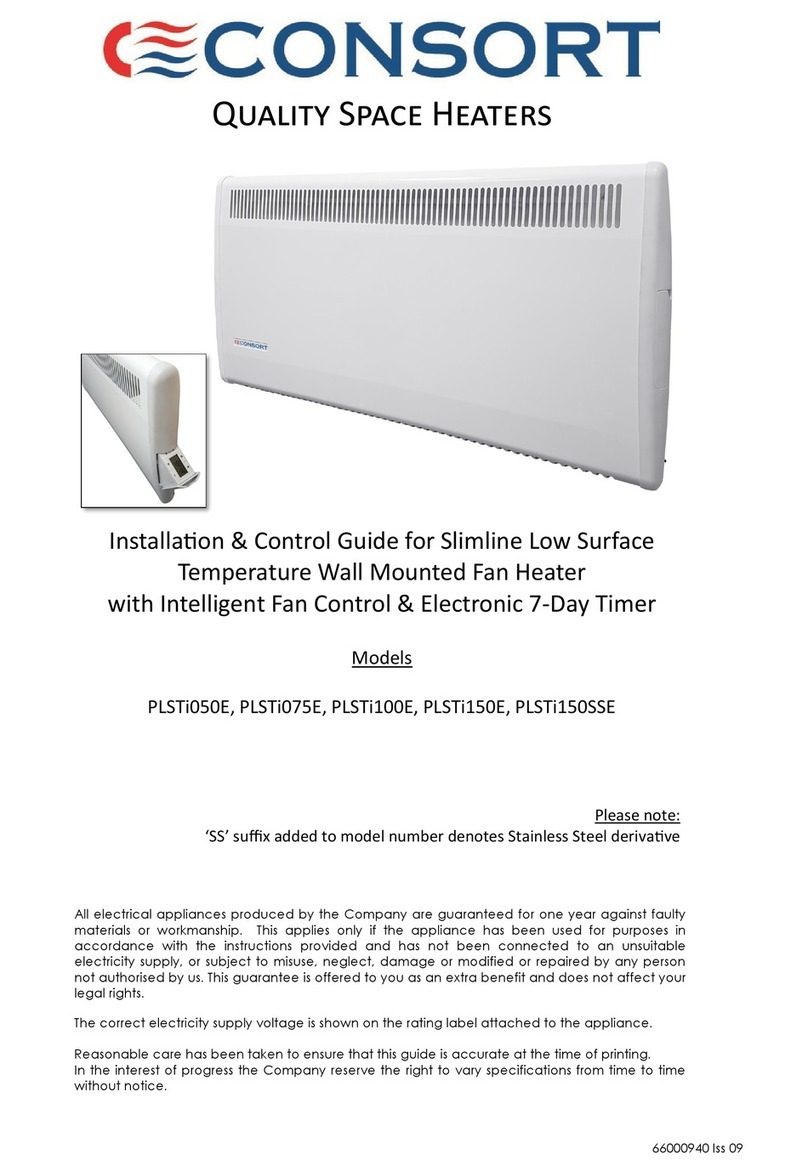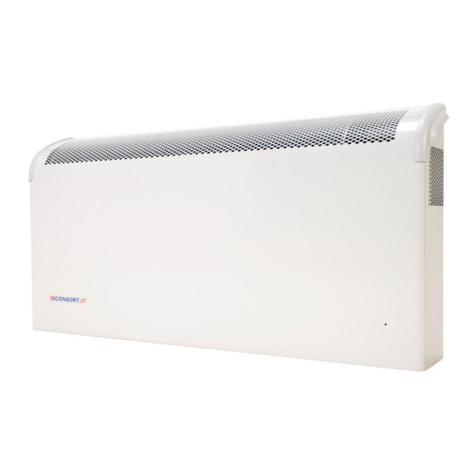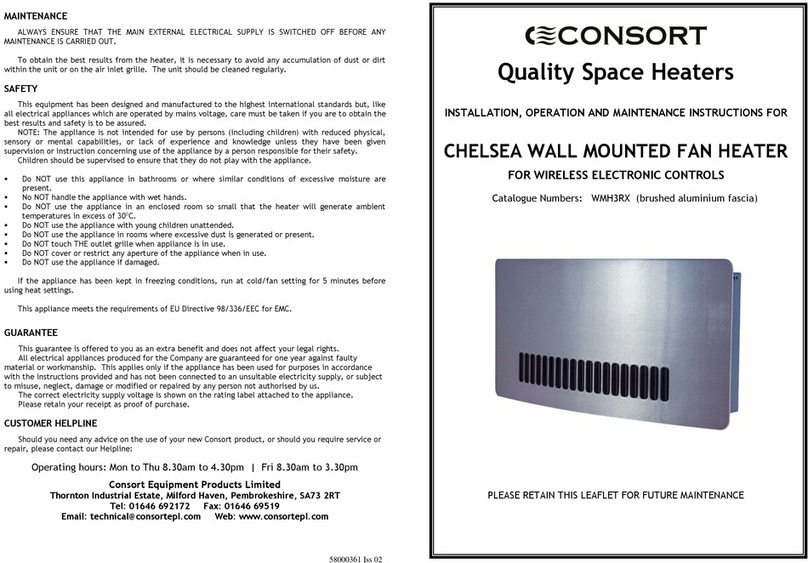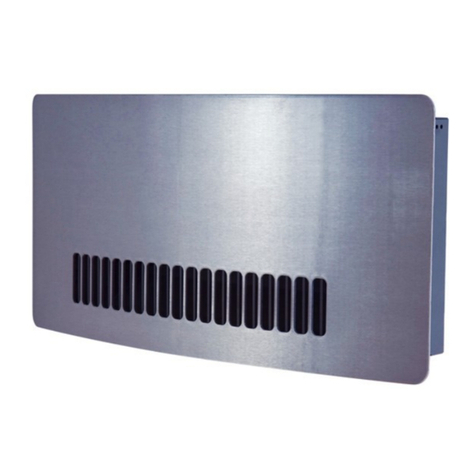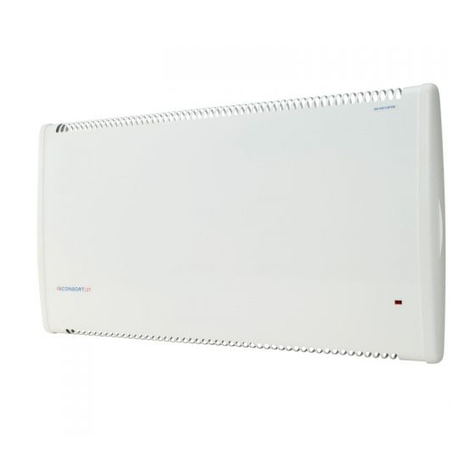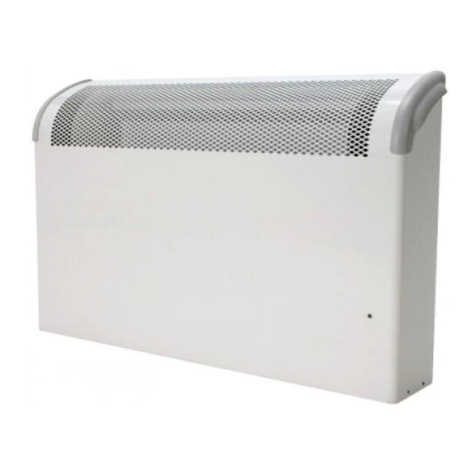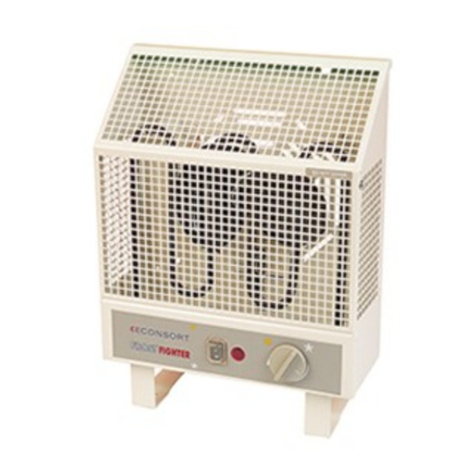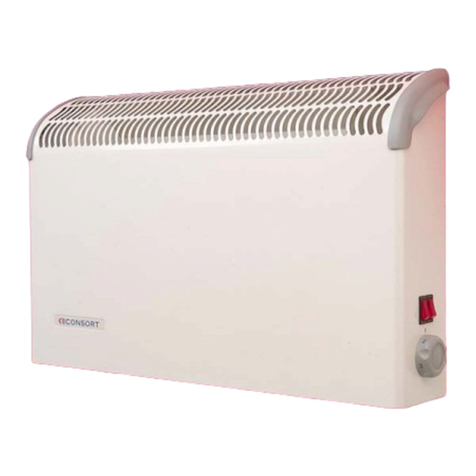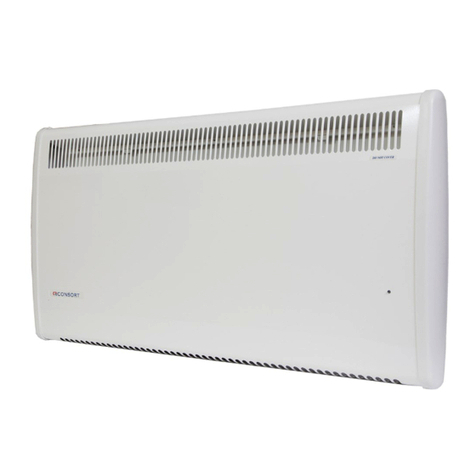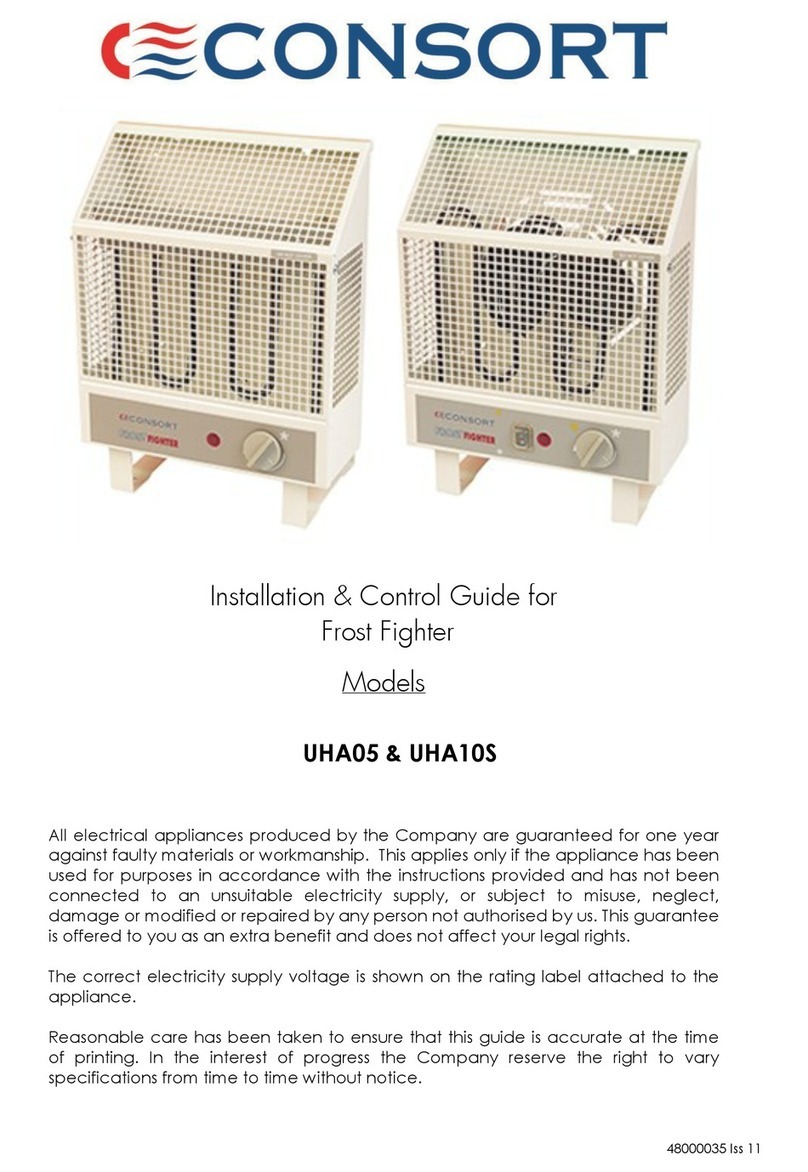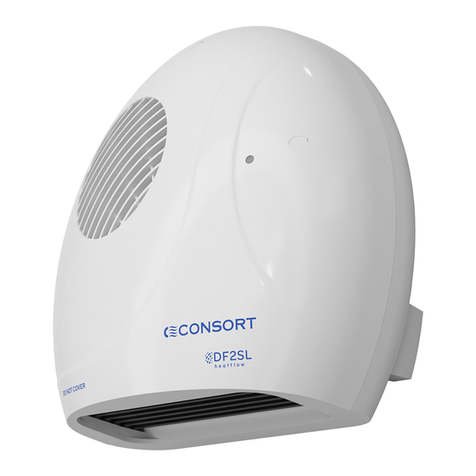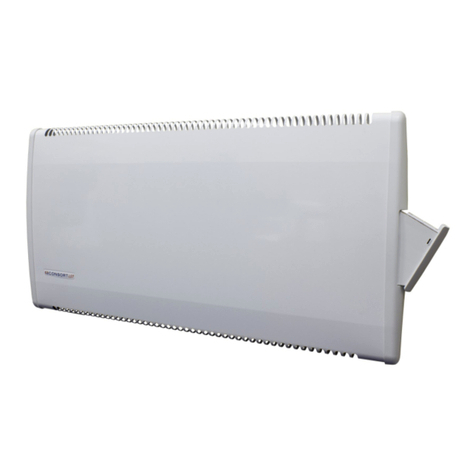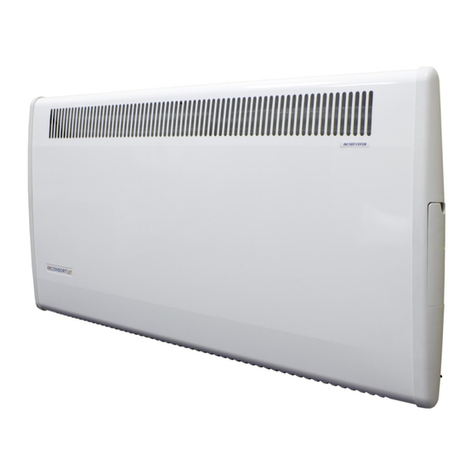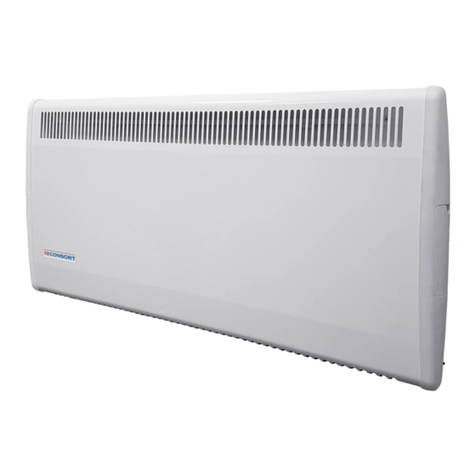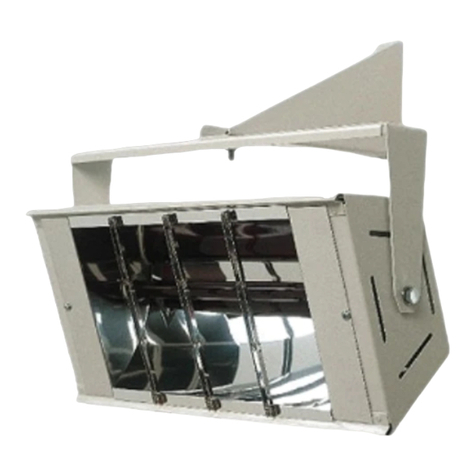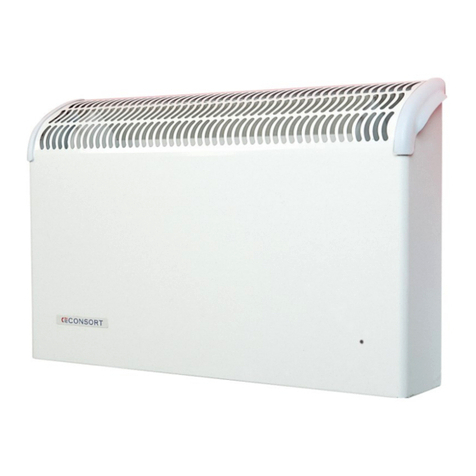
Overview
Please read this guide carefully and retain for future use
and maintenance.
This appliance has been designed and manufactured to
the highest international standards, however, care must
be taken for optimal results and safety. This appliance also
meets the requirements of EU Directive 2004/106/EC for
EMC and 2009/125/EC Directive.
Safety & Care
Our Low Surface Temperature heaters have been
designed and built to the NHS requirement for safe surface
temperatures which is that no surface which can be
touched by the user will be more than 43 degrees C (at a
room temperature of 21 degrees C.) This means that our
Low Surface Temperature heaters out-perform the
European Standard by a significant margin.
The appliance is not intended for use by persons (including
children) with reduced physical, sensory or mental
capabilities or lack of experience and knowledge unless
they have been given supervision or instruction
concerning use of the appliance by a person responsible
for their safety. Children should be supervised to ensure
that they do not play with the appliance.
Warning
Do NOT site the appliance into a corner.
Do NOT handle the appliance with wet hands.
Do NOT use the appliance in workshops or rooms
where excessive dust is generated or present.
Ensure that nothing is pushed into the air outlet of this
appliance.
Do NOT touch outlet grille when the appliance is in use.
Do NOT cover or restrict the appliance when in use.
Do NOT use the appliance if damaged.
Do NOT leave the appliance unattended where young
children are present.
Connection to the Main Supply
Electrical installation should be carried out by a
competent installer, preferably registered with NICEIC
(National Inspection Council for Electrical Installation
Contracting) in accordance with the 17 edition of the IEE
Wiring Regulations, (BS.7671), and any relevant Local
Authority Bye-Laws. This heater is fitted with a 3-core mains
supply cable and should be permanently connected to
the electricity supply via a double pole switch having 3mm
gap on each pole.
A switched Fused Connection unit to BS.1363. Part 4 is a
recommended mains supply connection accessory to
ensure compliance with safety requirements applicable to
fixed-wiring installation.
Note: When switched on for the first time the appliance may
emit a slight smell. This is purely the evaporation of a fluid used
in the manufacturing process.
WARNING: This appliance must be earthed.
Thermally Operated Cut-Out
The appliance is fitted with a thermally operated cut-out (TOC).
This is a safety device, which switches the heater off if, for any
reason, the appliance overheats. The TOC can only be re-set
after the appliance has cooled down. In order to re-set the
TOC, proceed as follows:
Switch off appliance and leave for approximately 10
minutes.
Switch appliance back on and the TOC will re-set.
Ensure that the appliance is functioning correctly. If
the TOC control operates again, the appliance
should be checked by a competent electrician.
The heater carries a ‘Do Not Cover’ label to warn the user that if
the appliance is covered, there is a risk of overheating.
Cleaning
Always disconnect the heater from the mains before cleaning.
The heater should not require any maintenance, but it is strongly
advised that it is kept clean. An occasional wipe over with a soft
cloth is all that should be necessary.
Do NOT use metal or furniture polish on any part of the
heater.
Do NOT touch the heater with wet hands or in any way bring
water into contact with it.
If the supply cord is damaged, it must be replaced by the
manufacturer or its service agent or a similarly qualified person
in order to avoid a hazard.
Mounting
To wall mount, the wall bracket supplied must be used.
Remove the wall bracket from the heater, with the chains
attached, by removing the 2 securing screws from the top of
the rear panel.
Fix the wall bracket to the wall using 4 screws.
Fig 1: Present the heater to the bracket
Fig 2: Locate the heater onto the bottom lugs via the 2 slots in
rear panel. Hinge the heater upwards and reattach the chain
assembly, then move the heater to the upright position. The link
plates should slide under the slotted bracket lip.
Fig 3: Tighten both retaining screws.
The heater must not be located immediately below a fixed
socket outlet.
2
